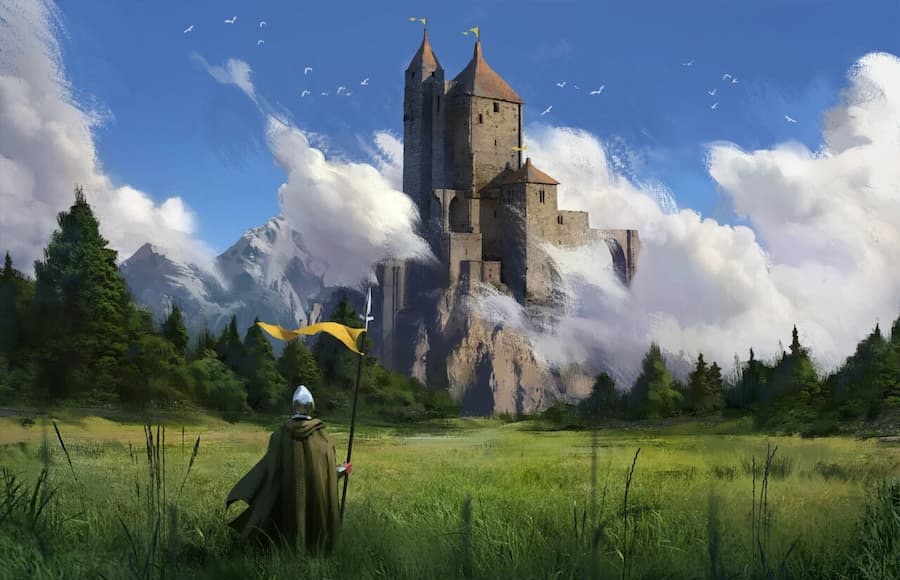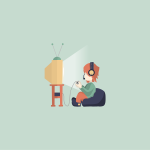When you play a game, the first thing you notice isn’t mechanics or dialogue but the world and the character you control. These two elements shape immersion, mood, and memory. A strong environment gives a sense of place, while a well-crafted character builds connection. Together, they define how a player experiences the game.
A game can have polished systems, but if the world looks bland or the characters don’t fit, the emotional link breaks. On the other hand, even simple mechanics feel memorable when wrapped in a cohesive world with characters that belong in it. That’s why 3D environment design and Character Design and is central to modern games.
Core Principles of Designing with Player Experience in Mind
The first step in shaping a player’s journey is to decide on the emotions you want them to feel. The mood acts as a compass for every design decision afterward.
Next comes defining the genre and tone of the setting. A gritty post-apocalyptic environment demands characters with practical gear, rough animations, and muted colors. A lighthearted fantasy world invites brighter palettes, stylized textures, and exaggerated features. Matching tone across both sides is crucial.
To keep the vision consistent, many teams rely on references and moodboards. They help align artists, designers, and animators, so the entire team is pulling in the same direction. Without this shared visual language, environments risk drifting away from the characters, leaving the game feeling stitched together instead of whole.
Shaping Experience Through 3D Environment Design
Environments are more than backdrops; they influence how a player thinks and reacts. Lighting and shadow, for example, can guide attention or set an emotional undertone. Harsh lighting might create tension, while soft illumination creates calmness. Games often use shadows not only for realism but to subtly lead players toward key areas without obvious markers.
Weather and atmospheric details add depth. A foggy street tells the player to be cautious, while a sudden rainstorm can heighten drama during a chase. Wind, dust, and debris bring motion into otherwise static spaces, reminding players that the world is alive. These environmental elements reinforce mood without needing dialogue or tutorials.
Color choices are another silent storyteller. Warm palettes often feel welcoming, while cold tones suggest danger or isolation. The right palette anchors a player emotionally, reinforcing the overall tone. A horror environment bathed in dull grays and dark reds signals dread, while a vibrant platformer filled with bright greens and blues creates joy. These choices matter more than many players consciously realize.

Shaping Experience Through 3D Character Design
If environments are the stage, characters are the performers who bring the play to life. Their design reflects the world around them. Clothing, textures, and materials should feel like they belong in that environment. A knight in shiny armor looks natural in a medieval castle but would look absurd in a post-apocalyptic wasteland.
Animation and posing also carry weight. A character who slouches, moves slowly, and hesitates conveys vulnerability or fear. One who walks upright with broad gestures projects confidence. Animation choices shape how players perceive their role in the story, even before a single line of dialogue is spoken.
Consistency is key. Characters must follow the rules of the world they inhabit. If the environment is realistic and gritty, overly cartoonish proportions break immersion. On the flip side, in a stylized environment, too much realism in characters can feel jarring. Cohesion between environment and 3d character design keeps players anchored in the fiction.

When Environments and Characters Work Together
The real magic happens when environments and characters aren’t just designed separately but deliberately echo one another. This is where immersion reaches its peak. A ruined, decaying city feels heavier when the character’s clothing is torn and their movements strained. A whimsical forest feels livelier when the hero’s outfit is playful and animations are exaggerated.
Consistency builds trust with the player. If every element feels like part of the same world, players stop questioning the design and start living inside it. They believe in the rules of the space, which makes gameplay smoother and storytelling more impactful. The balance of world and character design is not simply aesthetic, it directly influences how the player interprets challenges and rewards.
Examples of Cohesive 3D Design in Games
Silent Hill is often cited as a masterclass in environmental horror. Its foggy streets, decayed interiors, and oppressive lighting set a mood of unease. The characters, from ordinary townsfolk to grotesque monsters, mirror that world. Their twisted forms reflect the psychological horror at the story’s core. Together, they create dread that lingers long after the game is turned off.
The Last of Us takes a different approach, grounding its environments in realism. Overgrown cities, abandoned houses, and ruined highways immerse the player in a world reclaimed by nature. Characters reflect this grounded tone through practical clothing, weary expressions, and subtle animations. Every aspect reinforces the narrative of survival and loss.
The Legend of Zelda: Majora’s Mask blends stylization with atmosphere. Its slightly warped world design and eerie masks reflect themes of time, identity, and doom. The characters, with their exaggerated features and haunting expressions, align with this unsettling atmosphere. It’s a perfect example of how stylization can still achieve depth when environment and character choices support one another.
The BioShock series demonstrates the power of unified aesthetics. Rapture’s art deco architecture and Columbia’s floating cityscapes create unique identities, but both worlds remain consistent with their characters. Costumes, weapon designs, and animations all reflect the social structures and philosophies of these settings. The result is a world that feels internally logical and thematically powerful.
Final Thoughts
3D environment design and 3D character design aren’t separate tasks; they’re connected pillars of player experience. Environments set the stage, characters breathe life into it, and together they create immersion.
Developers should decide the emotional journey first, then let it guide every choice, from lighting to costumes. When both sides align, a game moves beyond mechanics and becomes an experience players carry with them long after the credits roll.
Lynn Martelli is an editor at Readability. She received her MFA in Creative Writing from Antioch University and has worked as an editor for over 10 years. Lynn has edited a wide variety of books, including fiction, non-fiction, memoirs, and more. In her free time, Lynn enjoys reading, writing, and spending time with her family and friends.















